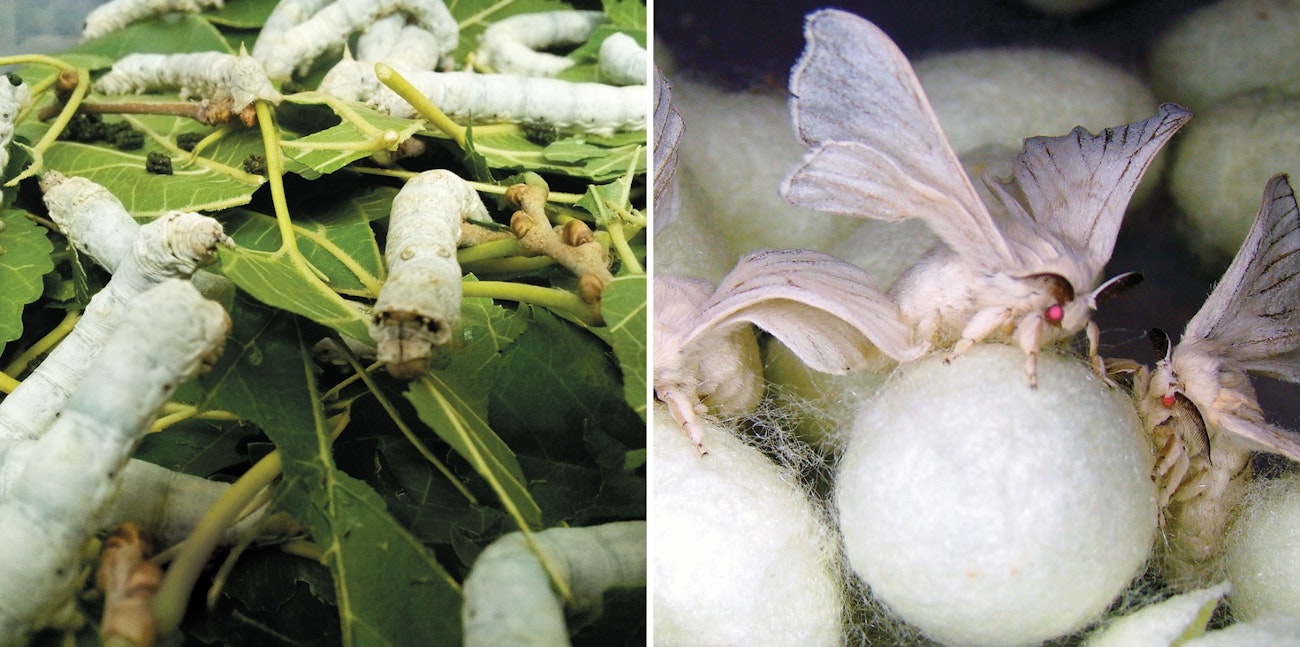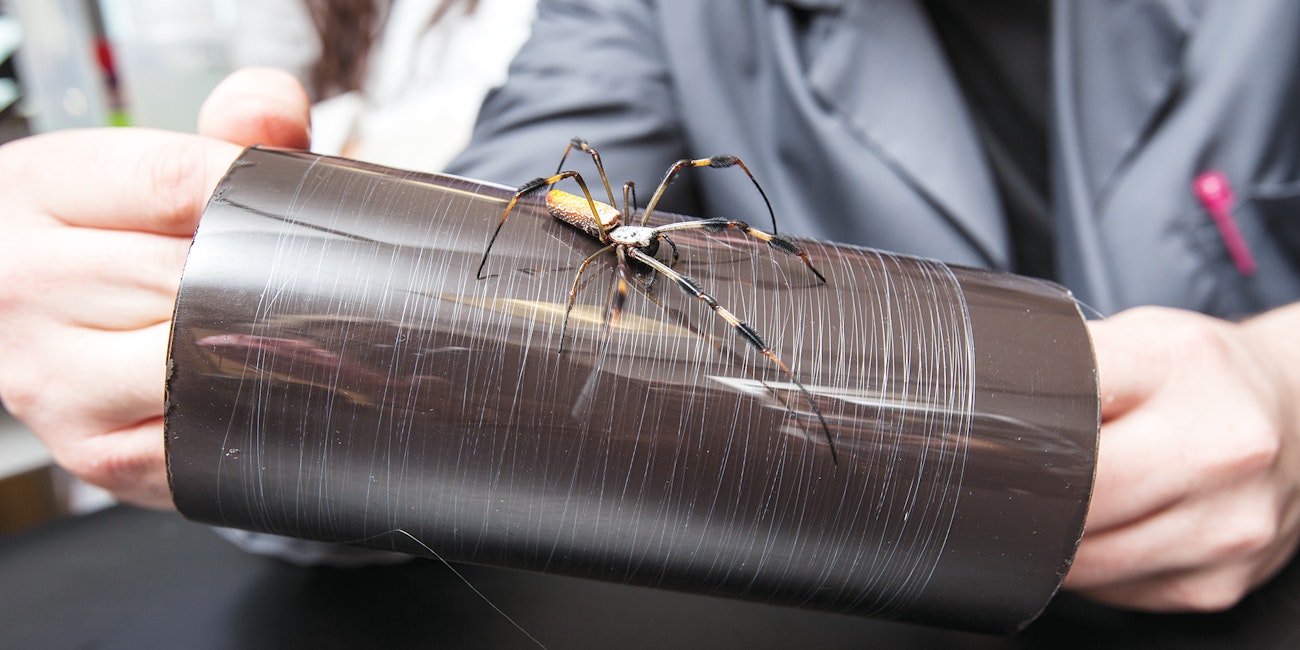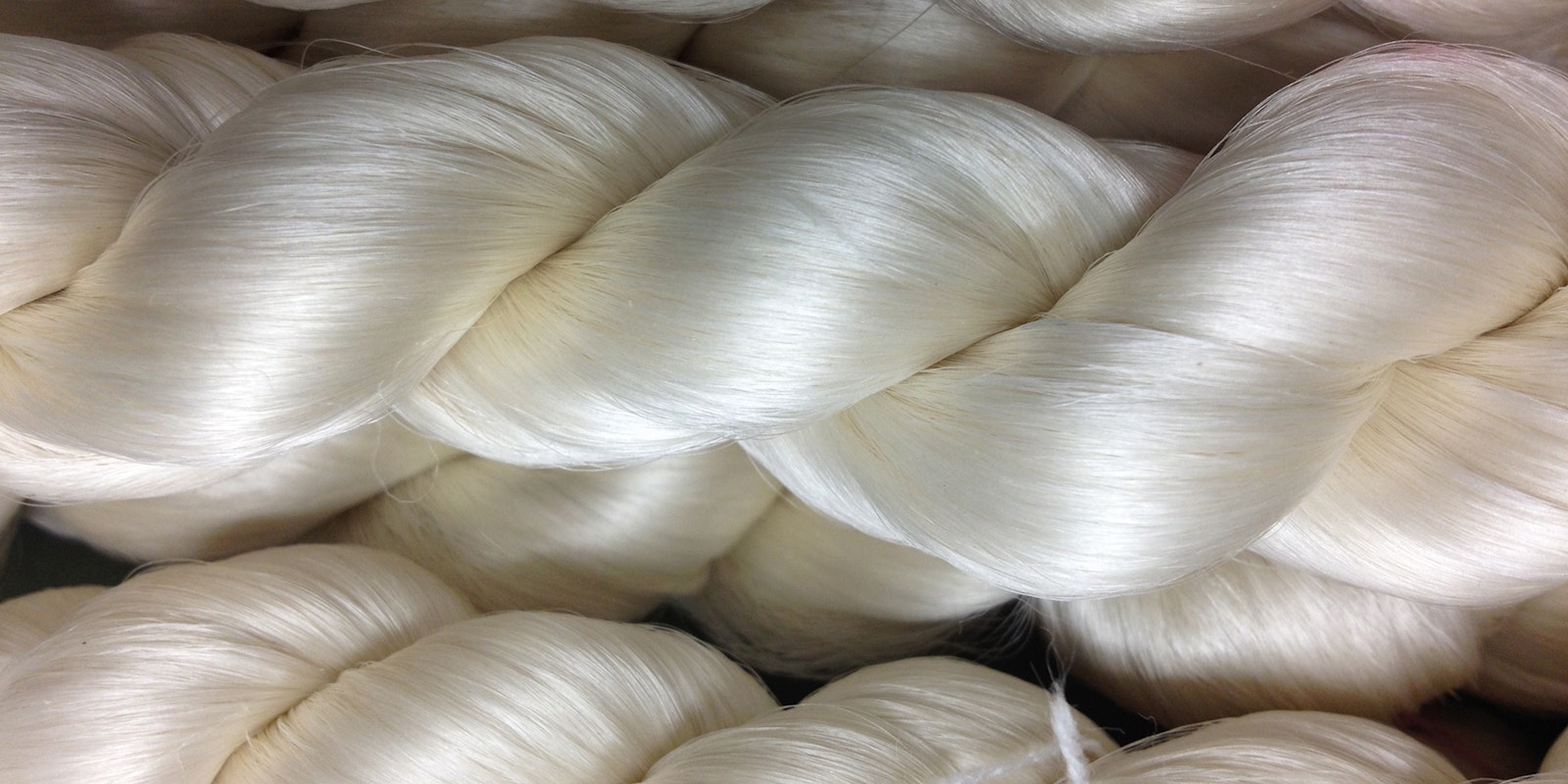Over the last few decades, advances in materials science have led to amazing new fibers. But are they really new? In this excerpt from “New Twists on Old Fibers” from Spin Off Fall 2017, Christina Pappas considers spider silk from historic and modern perspectives. (Spoiler alert: you still won’t find spider silk next to the wool at your local fiber store.)
Spider Silk in History
Spiders have been linked to spinning and weaving in mythology around the world, but how often has spider silk been a practical fiber source? King Louis XIV of France received a pair of spider silk stockings in 1709. In the early 1830s, a London journal published an experiment in which spider webs commonly found in the garden were collected for spinning, which did not work very well. However, they had moderate success extracting silk directly from the spider. While it was possible to collect the silk, it was hardly commercially feasible. Spiders only produce about one-third as much silk as a silkworm, and if spiders are kept together, they will fight to the death.
In the mid-1880s, textiles from the silk of golden orb spiders of Madagascar were featured at the Paris Exposition. A French missionary created a reel to extract the silk and developed a small spider silk industry. The spider silk textiles from the exposition were lost, but in the early 2000s, two researchers in Madagascar decided to try to replicate the nineteenth-century spider silk fabric. Over four years, 70 people extracted silk from over 1 million golden orb spiders and used a reel based on the original design. Once the silk was extracted, the spiders were released back into the wild. After about a week, they would have regenerated the silk and could be collected again.
Space Age Spider Silk
 Kraig Labs’ engineered silkworms at the fifth instar. The fifth instar is a silkworm’s last stage of growth before cocoon spinning (left). Fully grown Monster Silk moths (right). Photos courtesy of Kraig Biocraft Laboratories Inc.
Kraig Labs’ engineered silkworms at the fifth instar. The fifth instar is a silkworm’s last stage of growth before cocoon spinning (left). Fully grown Monster Silk moths (right). Photos courtesy of Kraig Biocraft Laboratories Inc.
Scientists aim to reproduce the strength and elasticity of spider silk, because the tensile strength of one strand of spider silk is comparable to the same-size strand of steel or Kevlar. In the early 2000s, a laboratory spliced the genes responsible for creating silk in spiders into the mammary glands of goats. “Spider goat” milk contained proteins found in spider silk, and with significant processing scientists could produce faux spider silk from the goat milk. However, it was not as strong and could not be produced in marketable quantities. The firm leading this research went bankrupt in 2009, although research continues at Randy Lewis’s lab at Utah State University.
 Golden orb spider on a drum of synthetic spider silk. Photo courtesy of Dr. Randolph V. Lewis, http://sbi.usu.edu/single-blog-spider.cfm
Golden orb spider on a drum of synthetic spider silk. Photo courtesy of Dr. Randolph V. Lewis, http://sbi.usu.edu/single-blog-spider.cfm
Bolt Threads, a biotech company, has begun producing faux spider silk using brewer’s yeast. The company is tinkering with the spinning technology but recently announced a limited run of ties woven from its product. A Michigan-based company is developing silkworms that make spider silk and is working on a transgenic silkworm project in Vietnam. However, faux spider silk still lacks the strength of real spider silk and has yet to be produced in sufficient quantities for today’s market.
Interested in other alternative fibers? Read the full article in Spin Off Fall 2017.
Also, remember that if you are an active subscriber to Spin Off magazine, you have unlimited access to previous issues, including Fall 2017. See our help center for the step-by-step process on how to access them.
Christina Pappas is an archaeologist at the University of Kentucky and a total fiber nerd. She lives in a tiny house with her husband, baby, crazy dogs, and way too much fiber.
Originally published October 19, 2017; updated October 24, 2022.

